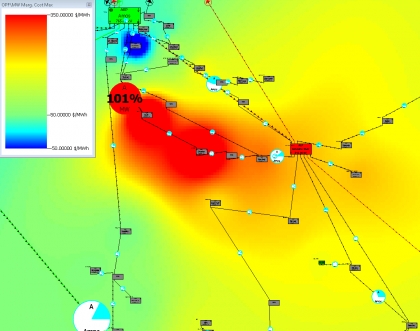Popular Science Recognizes ENG Professor for CleanTech Innovation
Power Grid Optimization Software Lowers Costs, Boosts Renewables
By Mark Dwortzan

In its June issue, Popular Science recognized Research Associate Professor Pablo Ruiz (ME) as one of 12 trailblazing energy technology innovators. Ruiz leads a team of researchers that has designed software that locates electric power grid congestion and reroutes power to less active transmission lines. Uncorking power grid bottlenecks this way could enable utilities not only to prevent blackouts but also to tap a higher percentage of electric power from renewable sources such as the sun and wind. The payoff: $1 billion to $2 billion annual savings in power generation costs.
To reap these benefits, no hardware upgrades are required; all a utility needs to do is install the software.

苏

“维
“By removing a small number of critical transmission lines, you change the relative resistances across alternative network paths, and electric power redistributes itself, relieving the congestion,” said Caramanis, the project’s co-principal investigator. “If you disconnect the right lines, you can relieve congestion, increase use of inexpensive power sources and lower congestion costs.”
Two years ago, the researchers implemented initial algorithms to reproduce real-life situations in collaboration with the PJM transmission system. Since then, they have worked to make their software more practical for power grid engineers in the control room.
First, they developed a much higher-precision model of a power transmission system based on the PJM system, which disperses electric power to approximately 100,000 nodes in the transmission network. Second, they improved the algorithms so that when an operator reconfigures transmission lines, the change will provide lower congestion and power generation costs for at least four hours. Third, they considerably increased renewable energy transmissions in its simulations, reducing wasted wind and solar electric power by 50 percent.
Ruiz and his collaborators are now working to transition the technology to industry. If the software is adopted across PJM or other vast transmission networks, controllers seeking to relieve congestion will have the capability to connect and disconnect selected transmission lines every half hour or hour as needed, replacing a traditional, tedious and error-prone process with a 21st-century, automated, high-precision tool.
Ruiz presents the concept behind the team’s transmission network “Topology Control Algorithms” (TCA) in a video produced by ARPA-E.